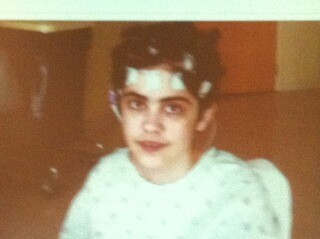Cross-posted from Curriculum Matters
At the National Council of Teachers of Mathematics convention in New Orleans
Recently, I wrote about how the common core has caused some math teachers to move away from teaching tricks. Instead, they’re emphasizing conceptual understanding and letting students figure out the short-hand techniques on their own.
Students with special needs are among the mostly likely to be taught math tricks—formulas, mnemonics, key words, and even songs. In a session April 10, a mother-daughter team described the importance of starting these students with concepts rather than math facts and memorization—even if the process is painstakingly slow. The duo argued that holistic understanding will allow students with special needs to eventually transfer skills, which will speed up learning in the long-run.
Their story was a compelling one. When Alex Dixon was in 6th grade, she suffered a stroke (a complication of pneumonia and brain surgery) and was placed into a coma for a month. She awoke having lost nearly all her physical and academic abilities; she had to relearn how to walk and talk, and eventually to read, write, and do math.

Alex’s math, as it turns out, returned quickly—more so than her reading. Her mother, Juli K. Dixon, attributes that to using inquiry and overarching concepts to reteach Alex in math, rather than having her memorize key words and compute quickly.
She showed a video of Alex, not long after the coma, doing a multi-digit addition problem (2,368 + 5,795). Instead of lining up the digits vertically and adding starting on the right side, Alex started with the thousands. She wrote 1,000 two times, then another five times, and counted them up. She worked from left to right, adding an extra thousand when she reached 10 in the hundreds place, and so on.
It took her several minutes to complete the problem, but Juli said that understanding place value conceptually helped Alex figure out how to do more difficult problems on her own.
“Rather than focusing on computation, we focused on context,” Alex’s mother said. “That allowed her to act it out with her mind and with manipulatives.”

For word problems, instead of circling the key words (i.e., “altogether,” “how many more,” “in all”) to determine the correct operation, Alex’s mom and her teacher had Alex visualize the problem to figure out what to do. “Did we jettison key words entirely? We elevated all the words to be important words,” she said.
In the classroom and on tests, Juli said, “We pushed for extended time rather than quick recall of facts.”
The standards for mathematical practice in the common core are all about making sense of problems, reasoning, and modeling—which Alex learned to do.
“We have to include students with special needs in the practices,” said Juli. “I worry that we won’t.”
The presenters recognized that Alex had more support at home than many students do. To that, Alex, who is now in 10th grade, said, “There’s always something you can do. Even a student can help the student reach their capabilities.”
Juli and Alex’s sister, Jessica, wrote a book about the family’s story, which you can find here.



